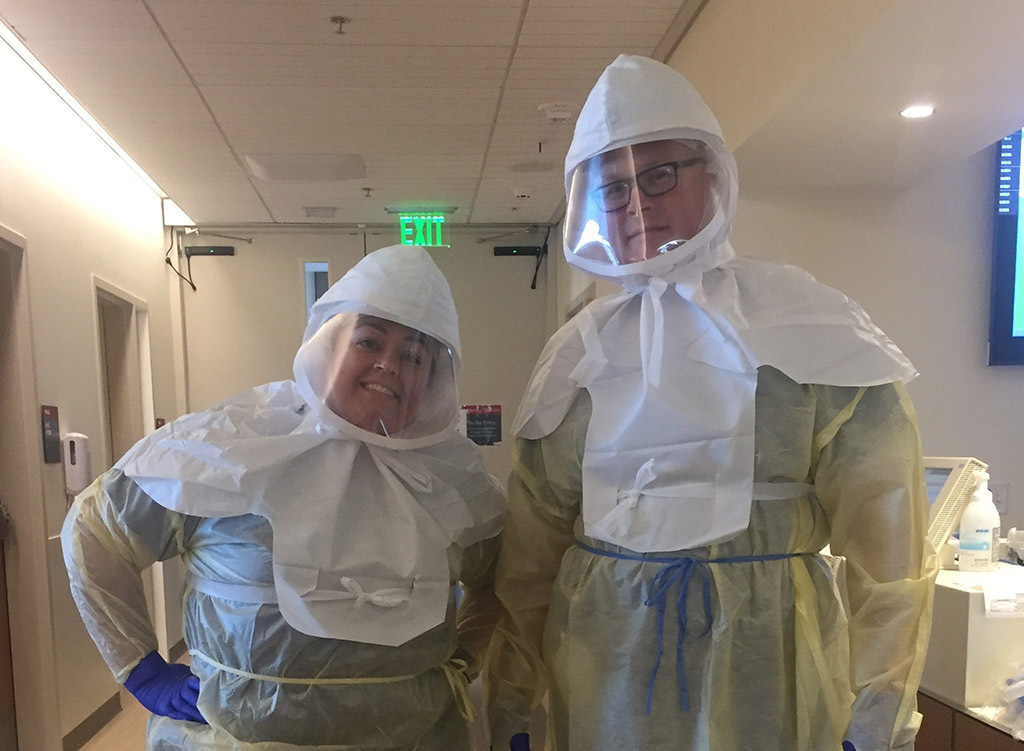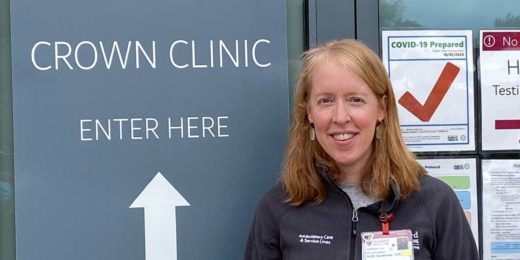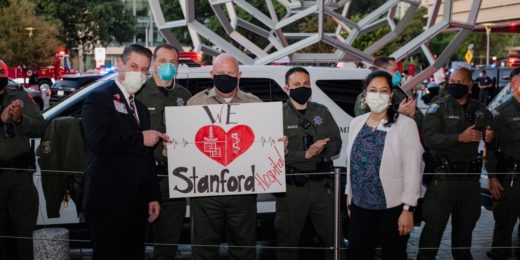Sasha Madison, an expert in infection prevention, has fought against the spread of disease in hospitals since 1978. She's battled the AIDS epidemic and led teams through the H1N1 flu, the SARS epidemic and Ebola outbreak. So in early January of last year when the first reports of a new infectious disease out of China began to appear, the news set off alarm bells.
"I very much had a gut reaction that this was the big one," said Madison, MPH, administrative director of Infection Prevention and Control at Stanford Health Care, the division responsible for preventing the spread of disease among hospital staff and patients.
For Madison and her colleagues, an overwhelming sense of responsibility to keep staff and patients safe kicked in and has never let up.
Now, a year after the World Health Organization officially declared the outbreak of the novel coronavirus a pandemic on March 11, 2020, many people working in health care have taken pause to honor those lost, to consider the enormity of the suffering, and, to take stock of what's been learned that can help shape a better future.
"Things have changed forever," said Lucy Tompkins, MD, the medical director of Infection Prevention and Control since 1989, who worked hand in hand with Madison throughout the pandemic. "We've always been that department 'in the basement.' Since the beginning of the pandemic, when people don't know what to do, it's been, 'Call Infection Prevention, call Sasha.' The pandemic has put us on the map."
On Jan. 8, 2020, Madison and Tompkins were in a regularly scheduled meeting of Stanford Medicine's standing subcommittee on emerging infectious diseases when discussion first broke out on what to do about the novel coronavirus. Both planned to begin checking the websites of the Centers for Disease Control and Prevention and the World Health Organization each morning and night, watching for changes in Wuhan, China, where the virus had recently begun spreading.
An action plan with all hands on deck
That meeting also set off an action plan to create an institution-wide executive team that would oversee Stanford Medicine's clinical and operation response to COVID-19, the disease caused by the virus. (That group is now called the Clinical Oversight Resource Team, or CORT.)
That team-focused plan, which brings together experts across Stanford Medicine to work together, has been key to Stanford's success in combating the pandemic. It's worked for departments across the institution, and in particular for infection prevention.
"Immediately, we pushed for the entire organization to develop that command center; that's been incredibly important throughout," said Tompkins, who co-chairs the Emerging Infectious Diseases committee with Yvonne Maldonado, MD, chief of infection prevention and control at Stanford Children's Health. "In that meeting we said, we think this is coming our way and we need a response."

For any health care system facing an outbreak of an infectious disease, the infection prevention team will always play a leading role, Tompkins said. She and Madison both knew this from the start.
Together with other team members, they drew on their collective years of experience to lead the organization -- as well as the broader community -- through what would become the pandemic.
On Jan. 21, 2020, the CDC confirmed the first novel coronavirus case in the United States. Ten days later, Santa Clara County, where Stanford Medicine's health system is headquartered, reported its first confirmed case in a man who had recently traveled to Wuhan. Worries had suddenly transformed into realities, and Stanford Medicine stepped up its response.
Preparing workers to 'go into battle'
Madison immediately turned her attention to ensuring health care workers' safety. She knew patients would soon be arriving at Stanford's hospitals with the highly contagious virus, and concerns were growing about disruptions to the supply chain for personal protective gear like masks and gowns.
Early on, Madison said, the biggest concern for her and her colleagues at Stanford Children's and Stanford Health Care-ValleyCare was protecting health care workers. "That was for me the hardest, almost heaviest feeling, because you are asking people to go into battle, and you are hoping they have everything they need," Madison said. "It's very scary to be leading that."
Fortunately, Stanford Medicine's supply chain team was also preparing for the virus's arrival. "They made sure we had what we needed," Madison said.
Repeatedly, when she's had a problem, she's called other experts as well, including in patient transport, housekeeping, nutritional services, and engineering and maintenance. Throughout the pandemic, she has worked closely with infection control leaders at county, state and national levels trying to weave together often conflicting guidelines into actionable guidance for Stanford Medicine, Madison said.
"Things were changing so fast. We needed to continually form alliances, break down silos, create new teams," Madison said. Those teams included health care workers -- physicians, nurses, respiratory therapists, lab phlebotomists -- who stepped in to help implement constantly changing new guidelines on patient care, such as how to put contagious COVID-19 patients on respirators.
"These collaborations allowed our caregivers to give patients the best care possible," Madison said. "If anything good is to come out of this pandemic, it's how we've learned to interconnect and how important each of us are. We couldn't have achieved what we achieved without everyone working together."
From 24/7 to light at the end of the tunnel
During March of last year and into April, Madison and Tompkins were working many extra hours every day, and have been answering calls 24/7 since. Now, with COVID-19 vaccines available, they are beginning to see a light at the end of the tunnel, Tompkins said.
"In the beginning of the pandemic, it was, I would say for both me and Sasha, a sense of tremendous urgency that we get the hospital to understand what was coming, to get everyone to understand that this was going to be a really big deal," she said.
Like so many others working in health care at Stanford Medicine, they've been exhausted, confused -- and frustrated by the constant unknowns and the floods of new research -- as information about the virus changed and evolved. But along with this medley of powerful emotions has come a great sense of purpose, Madison said.
"It's a hard job," she said. "But when you go home, no matter how tired you are, you feel you made a difference every day. Throughout this pandemic, I've reported on lots of numbers, but for each one of those numbers I see a patient, caregivers, family members. We are doing the best we can to heal that patient. Stanford Medicine is focused on healing and compassion, one patient at a time."
The Voices of COVID series captures the stories of the many people at Stanford Medicine who have been stepping up to the challenge of the pandemic. Follow along on social media and look for new stories regularly.
Photo by Brocreative






